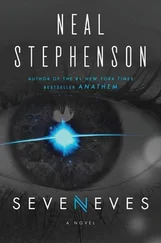The brain, as far as Richard could determine from haphazard skimming of whatever came up on Google, was sort of like the electrical system of Mogadishu. A whole lot was going on in Mogadishu that required copper wire for conveyance of power and information, but there was only so much copper to go around, and so what wasn’t being actively used tended to get pulled down by militias and taken crosstown to beef up some power-hungry warlord’s private, improvised power network. As with copper in Mogadishu, so with neurons in the brain. The brains of people who did unbelievably boring shit for a living showed dark patches in the zones responsible for job-related processes, since all those almost-never-exercised neurons got pulled down and trucked somewhere else and used to beef up the circuits used to keep track of NCAA tournament brackets and celebrity makeovers.
So the airport luggage scanner epiphany was simultaneously dis- and encouraging. Dis- because some occupational psychologists had already beaten him to it and come up with a fix, but en- because people with Ph.D.s had vouched for the basic idea.
In order to make the case for MACUMAPPIS, Richard had to, (a) find some other desperately boring job to use as his experimentum crucis, and (b) figure out a way to map its basic processes onto Medieval Armed Combat. Between his years as a slavering World of Warcraft addict and his years as a founder/creator of T’Rain, he had ripped out probably half of the neurons in his brain and dragged them over and soldered them on to the cortical centers responsible for two-handed axe wielding, shield bashing, arrow shooting, and spell casting. In an evening of random questing around the imaginary world that D-squared and Skeletor had created, Richard could fire more neurons than Einstein had used while coming up with the idea of general relativity. Certainly way more neurons than the average supermarket checkout clerk or private security guard fired during an eight-hour shift. And the power of the Internet ought to make all that neural activity reswitchable; you should be able to patch it all together so that it would work.
Around this time there was an airport security scare in which some fuckwit entered a concourse by walking upstream through an exit portal, bypassing the security checkpoint. As always happened in such cases, the entire airport had to be shut down. Planes waiting for takeoff had to taxi back to gates and unload all passengers and baggage. All the passengers had to be ejected from the sterile side of the airport and then turn around and pass through security again. Flights were delayed, and the delays ramified throughout the global air travel system, eventually racking up a cost of tens of millions of dollars. All of which could have been prevented had the one TSA employee posted by the exit—an employee whose sole purpose in being there was to just keep his fucking eyes open and stop people from walking the wrong way through a door—had actually done his job. Richard was fascinated. How could even the laziest and sloppiest employee screw this up? The answer, apparently, was that it had nothing to do with laziness or sloppiness. It was that Mogadishu copper thing all over again. The neural pathways required to accomplish the seemingly easy task of identifying a pedestrian walking the wrong way through a door had, in the brain of this employee, been uprooted a long time ago and zip-tied onto those used by some other, more important, or at least more frequently used, procedure.
And so they started up the first APPIS pilot project, which went something like this. They shot some consumer-grade video of Corporation 9592 employees walking down a hallway. They spun that up into a demo, which they showed to several regional airports that were too small and poorly funded to afford fancy, expensive, alarm-equipped one-way doors, and thus had to rely on the bored-employee-sitting-in-a-chair-by-the-door technology. They parlayed those meetings into a deal that gave them access to live 24/7 security camera footage from a couple of those airports. The footage, of course, just showed people walking through the exit.
They patched that footage into pattern recognition software that identified the shapes of the individual humans and translated them into vector data in 3D space. This made it possible to import all the data into the T’Rain game engine. The same positions and movements were conferred on avatars from the T’Rain world. The stream of human passengers walking down the corridor in their blazers, their high heels, their Chicago Bears sweatpants, became a stream of K’Shetriae, Dwinn, trolls, and other fantasy characters, dressed in chain mail, plate armor, and wizards’ robes, moving down a stone-lined passageway at the exit of the mighty Citadel of Garzantum.
The High Marshal of the Garzantian Empire then made an announcement to the effect that huge amounts of gold could be earned by, honor bestowed upon, and valuable weapons and armor handed out to anyone who nabbed a goblin attempting to sneak in through said passageway. Characters who volunteered for this duty were issued a special instrument, the Horn of Vigilance, and told to blow it whenever they spotted a wrong-way goblin. Extra points were handed out for actually confronting the goblin and (of course) engaging it in Medieval Armed Combat.
Now, in all the entire (real) world’s airports put together, the number of people who got into concourses by walking the wrong way through exit doors amounted to maybe one or two per year: not enough to hold the attention, or assure the vigilance, of even the most rabid T’Rain player. So the APPIS system now sweetened the pot by automatically generating fictitious, virtual wrong-way goblins and sending them up that tunnel at the rate of one every couple of minutes, every day, forever. Some balancing had to happen—the value of the rewards had to be tweaked relative to the frequency of wrong-way goblins—but with a minimal amount of adjustment they were able to set the system up in such a way that 100 percent of all the wrong-way goblins were apprehended. The total number of wrong-way goblins that had to be generated per year was about two hundred thousand—which was no problem, since generating them was free. The trick, of course, was that a tiny minority of those one-way goblins were not, in fact, computer-generated figments. They were representations of actual human forms that had been picked up by airport security cameras as they walked the wrong way into airport concourses. In reality, of course, this happened so rarely that testing the system was well-nigh impossible, and so they ran drills, several times a day, in which uniformed, badged TSA employees would present themselves at the exit and show credentials to the bored guard and then walk upstream into the concourse. In exactly 100 percent of all such cases, some T’Rain player, somewhere in the world (almost always a gold farmer in China) would instantly raise the Horn of Vigilance to his virtual lips and blow a mighty blast and rush out to confront the corresponding one-way goblin: an event that, through some artful cross-wiring between Corporation 9592’s servers and the airport security systems, would cause red lights to flash and horns to sound and doors to automatically lock at the airport in question.
Corvallis and most of the other techies hated this idea because of its sheer bogosity, which was screamingly obvious to any person of technical acumen who thought about it for more than a few seconds. If their pattern-recognition software could identify the moving travelers and vectorize their body positions well enough to translate their movements into T’Rain, then it could just as easily notice, automatically, with no human intervention, when one of those figures was walking the wrong way and sound the alarm. There was no need at all to have human players in the loop. They should just spin out the pattern-recognition part of it as a separate business.
Читать дальше





